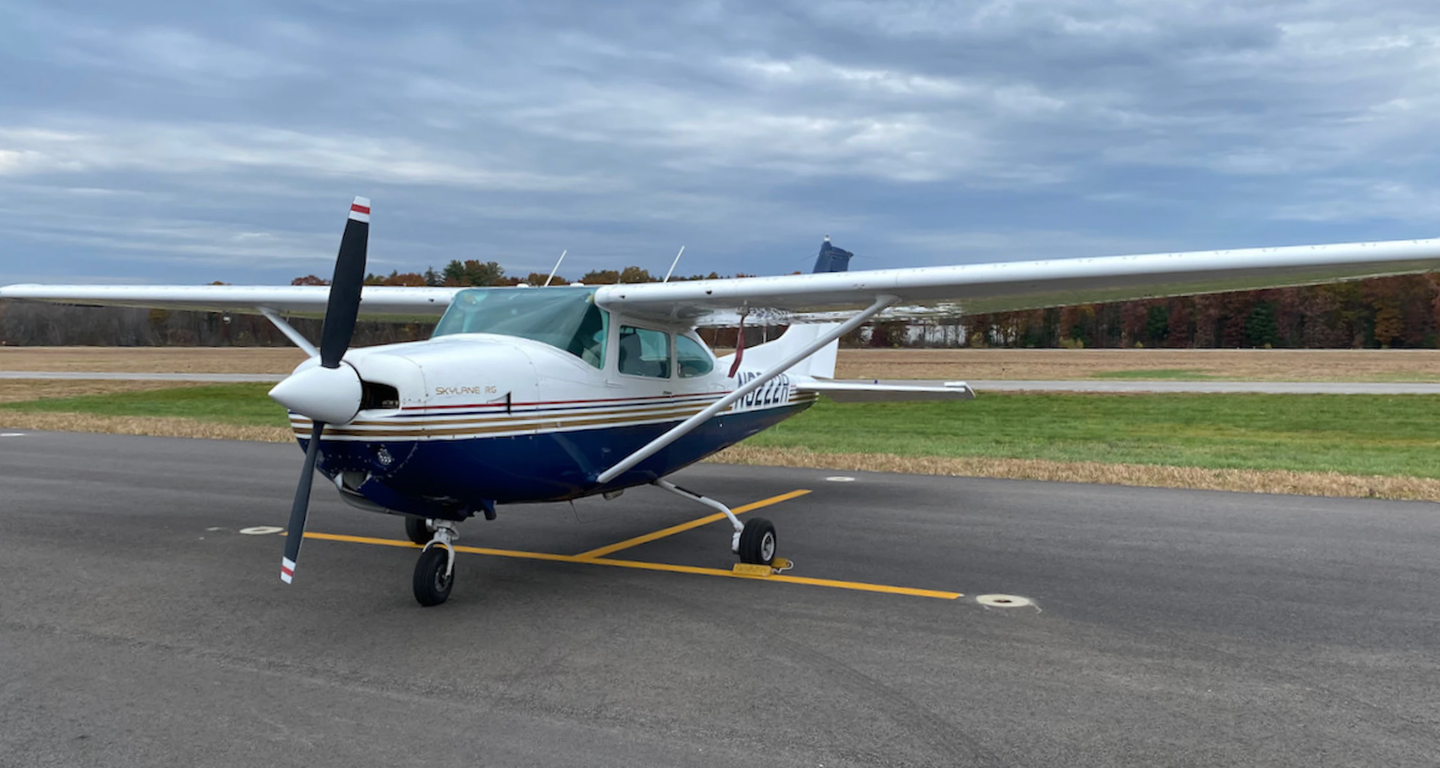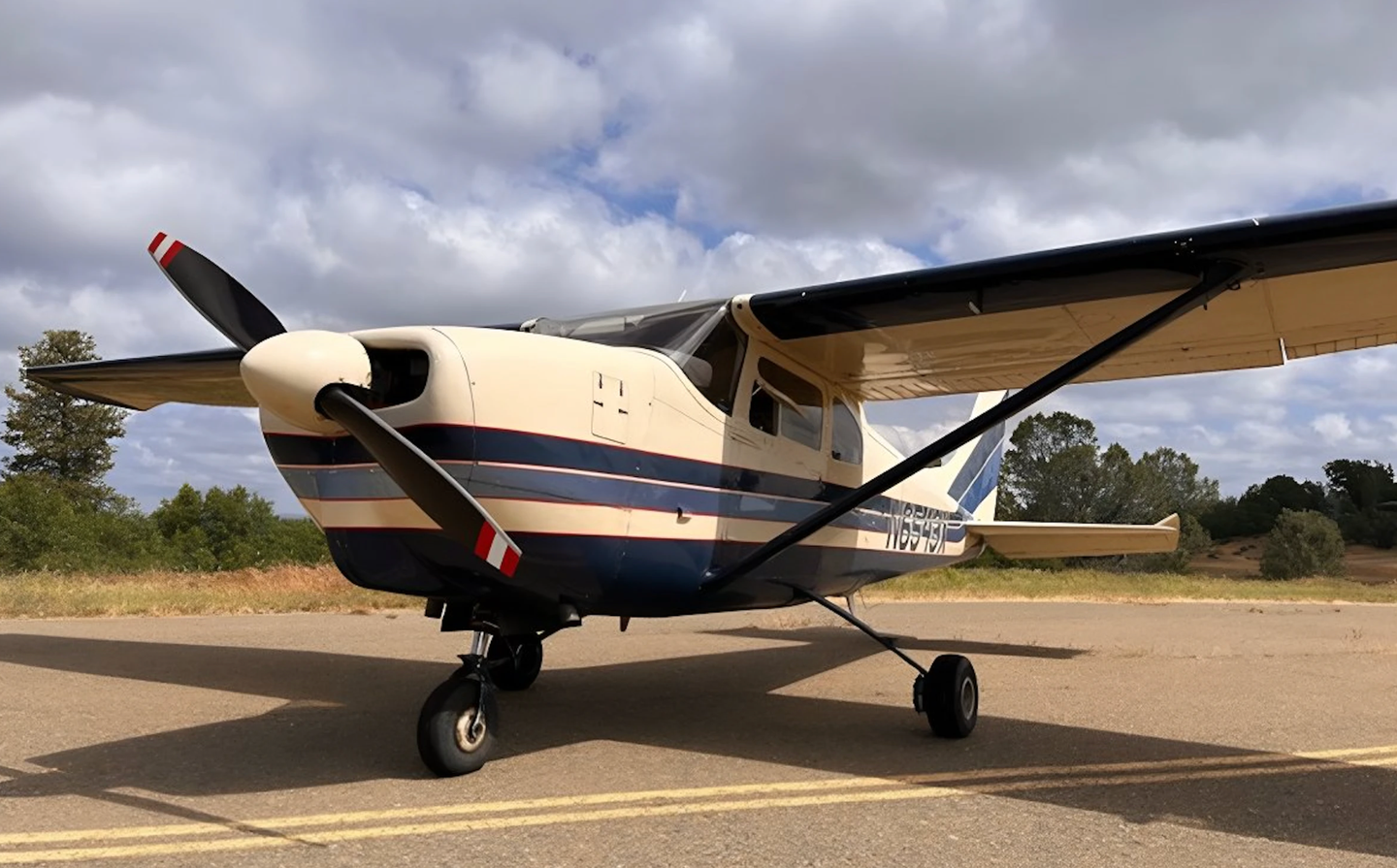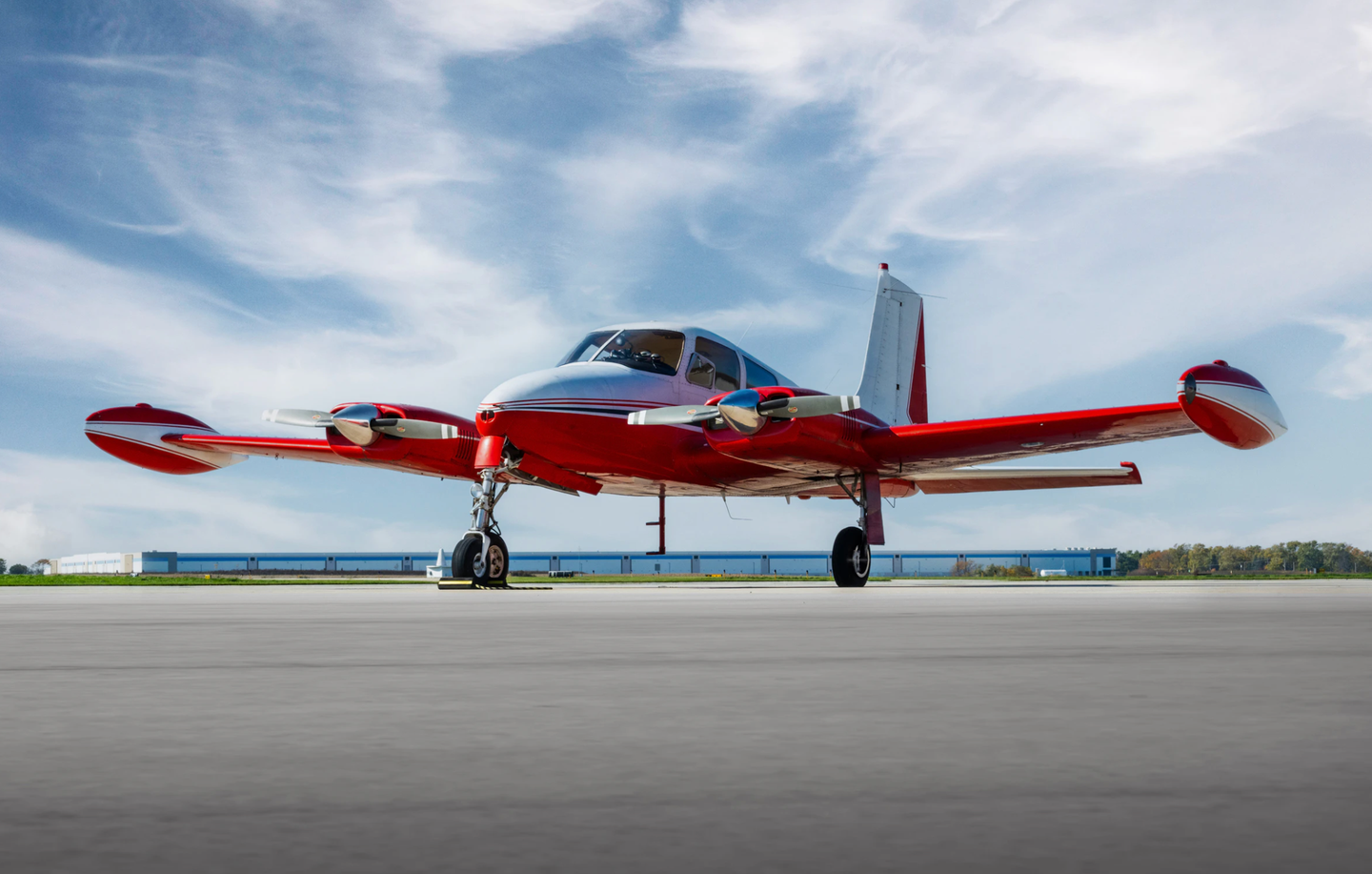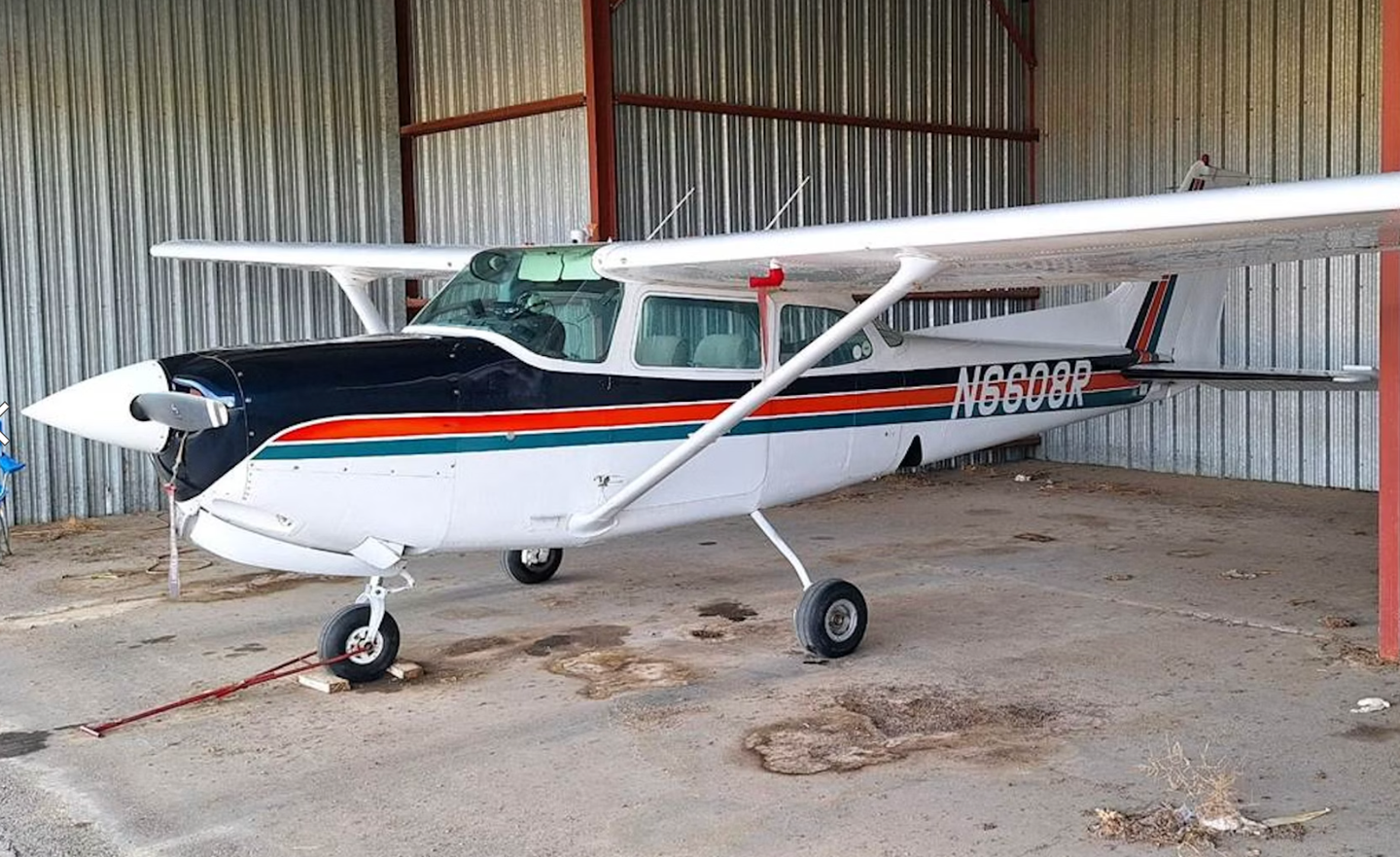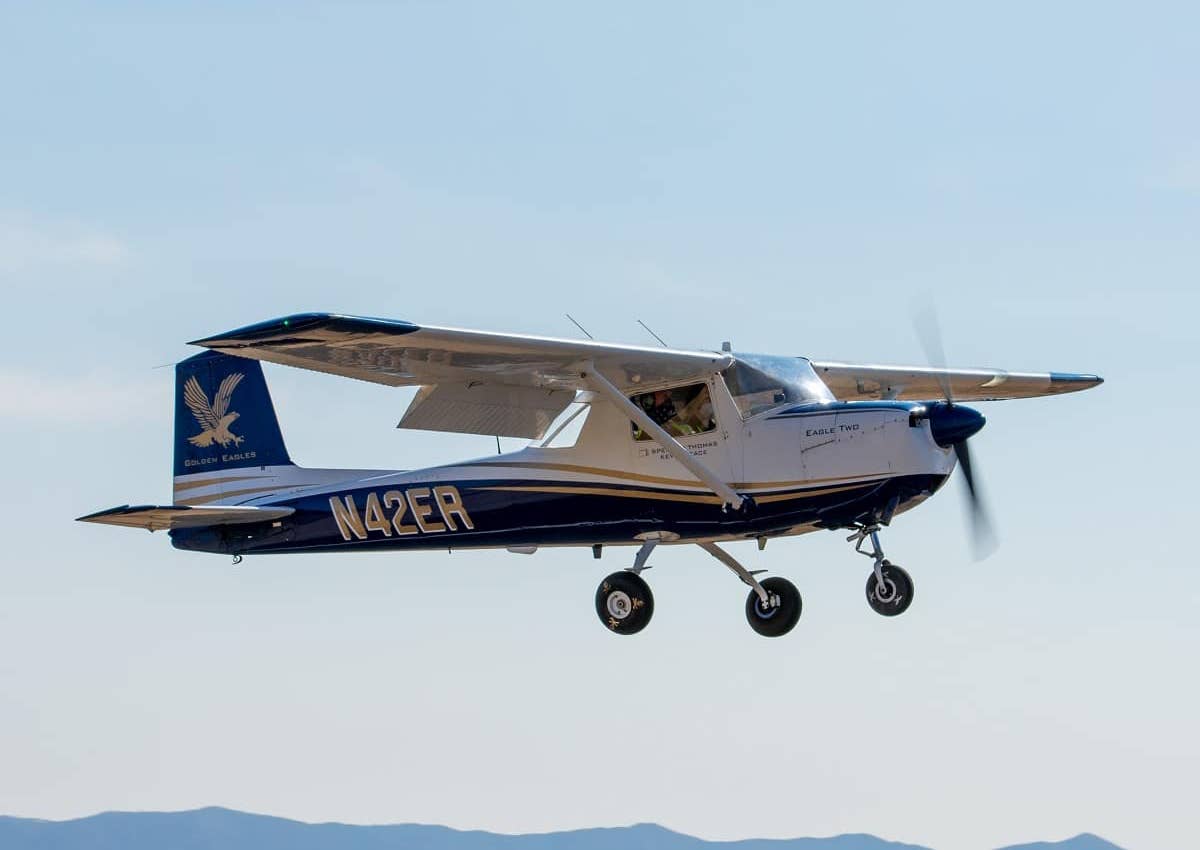Cessna 170A: Rebuild Of A Lifetime, Literally
Jacobson passed his checkride in this cessna 170A in 1962, and look at it now
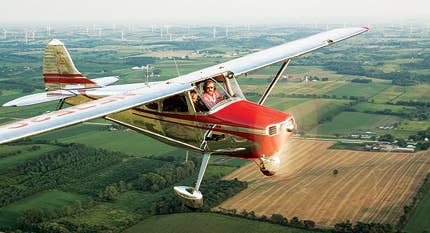
One of the benefits of writing about airplanes for a living is that I'm often entrusted to fly some truly wonderful machines. I flew half a dozen different airplanes at the 2010 Oshkosh AirVenture, and though there was one that cost $1.7 million and carried six people at 220 knots, by far the most impressive of the lot was the smallest, the oldest, the least expensive and the only one that was used. "Well used" might be a better description. The Cessna 170A in question was built in 1950 (and yes, you probably saw this coming), but it was a prize winner. It was the inevitable beneficiary of a discontinuous, 25-year renovation.
It belongs to Stephen E. "Jake" Jacobson of Ft. Worth, Texas. Jake's father and three partners purchased the all-metal Cessna for $3,500 from a pipeline patrol company in the early 1960s when Jake was a teenager. The 170A was indeed well used. It had 5,000 hours on it in only 10 years of service, but because it had been a working machine, flown practically every day and maintained religiously, it was in sound mechanical condition.
Jake took most of his early training in his dad's 170A, even earning his private and commercial tickets in the all-aluminum Cessna. His dad later became the sole owner of the 170A, and the airplane remained in the family until 1972, then was sold and moved to Florida, sold again and relocated to Arizona. Meanwhile, Jake had moved on to a U.S. Navy military career flying attack aircraft off the carriers USS Oriskany and USS Roosevelt. Jake flew combat missions over Vietnam during the height of the conflict. He spent 2,000 hours in military jets before retiring from the Navy.
 |
Jake continued to have a soft spot for the little Cessna and caught up with it in 1985. "It was up for sale at Falcon Field in Phoenix, and I jumped at the chance to buy it unlicensed and ’as is' for $9,500," says Jake. "I was so attached to the airplane for sentimental reasons, I was going to buy it no matter what, and I didn't bother with a prebuy inspection from an A&P mechanic."
Jake comments that he learned quickly the inadvisability of such a rash action. "This was not a smart move. I tried to get it licensed at a local shop (in Phoenix) before flying it home to San Francisco. After writing checks for over three grand, the best I could negotiate was a ferry permit for 10 hours/30 days," Jacobson explained. "Signing off the annual inspection at this shop would have meant spending big bucks and leaving it in Phoenix for several weeks." As a result, Jake flew his airplane to the San Francisco area on the ferry permit and initiated the rebuild project at Porterville in the nearby San Joaquin Valley.
 |
The 170A has been his personal fixer-upper ever since, and did it ever demand some fixing up. "After a little research," says Jacobson, "I found that my lovely little 170 had been parked outside near the coast in Florida for over three years. It had developed a small leak at the top corner of the windshield, so the salty moisture that came in at the top of the cabin ran down the door post and into the landing-gear box, eventually finding its way down the belly and out the tail cone. It was a corrosion nightmare! Finally, I had the big picture about why a prebuy inspection is a good idea, but it was too late."
The long road from rough-and-ready pipeline patroller to Sun ’n Fun and Oshkosh award winner was to span nearly five decades, two of them in one form or another of active restoration. When Jake was financially able to initiate the ground-up renovation, he had his doubts as to whether the whole project was worthwhile.
"Now, I was at the go/no-go decision point," Jake admits. "Was this tired and corroded old 170A with a runout engine worth repairing, or should I cut my losses and part it out? Clearly, from the economic standpoint, the answer was to scrap it and go look for a clean, late-model 170B. However, this was the airplane I learned to fly in with my father, so scrapping it was kind of like putting down the family dog. I was not trying to produce a show plane, but I wanted to have a solid airplane with a nice paint job and an IFR panel."
 |
Jacobson worked on the Cessna piecemeal and occasionally flew it in various stages of completion. "Through the ’80s and ’90s, I was able to fly the airplane probably no more than 10 hours," says Jacobson, "and I was writing checks for $500 or $1,000 every few weeks on the restoration. I suppose if I did the math, I could have been chartering a Learjet for the money I spent per hour."
Progress was slow, primarily because of the amount of work required and the cost for contract labor and parts. As a result, Jacobson's Cessna remained basically grounded. "While my 170 project was on hold due to lack of funds, I went to Oshkosh on vacation to look at 170s. There I saw Don Lindholm's 170A, N1424D. It was a highly polished award winner with the factory-original panel and red trim design. At this point, I decided to restore N5752C to original and forget about the IFR panel and custom paint job."
Jacobson's ground-up Cessna 170A rebuild project involved outright replacement of many components, including corroded fuselage skins and all interior parts. "The outer surface corrosion on fuselage skins was repairable, but the belly skins and rivets had to be replaced. Del-Air in Porterville, Calif., had purchased some surplus 170 and early 172 jigs from the Cessna factory, so they had the capability of replacing large areas of aluminum skin and still wind up with a straight fuselage. Del-Air also had John Garrett and Paul Lodas who, according to the Cessna Pilots Association, were currently the best sheet-metal guys in the area," Jacobson explains.
 Stephen "Jake" Jacobson restored this Cessna 170, originally purchased by his father in the 1960s for $3,500, to prize-winning condition. It was the recipient of the Grand Champion Classic Aircraft award at EAA AirVenture, as well as many other awards. |
After Garrett and Lodas completed the structural work on the fuselage, Chris Shaw joined the team at Del-Air and added his expertise to rebuilding the wings, cowling and instrument panel. Paul and John retired before the airplane was finished, so Chris took on the rest of the project. Chris overhauled the instrument panel, rewired the entire airplane and did the final assembly.
"One of the biggest challenges we encountered during restoration was finding cabin-interior fabric details and specifications," says Jacobson. "This information was not readily available until Cessna started producing the 170B model. Just when we were about to give up on the original interior, Steve Fushelberger, a former Cessna employee, put me in touch with Ron Partridge, Customer Service Manager, at Cessna's Propeller Division. With the permission of Jack Pelton, Cessna's CEO, Ron was able to provide me with archived factory engineering interior drawings for N5752C. This included the original fabric specs, as well as the dimensions and locations of the stitch lines."
"Using this information, Ronnie Broadhead, owner of Buster's Upholstery in Porterville, Calif., re-created the original interior. Ronnie has restored several award-winning Cessna 195 interiors and is well known in California for his custom interiors in helicopters and collector cars," Jacobson explains.
Jacobson says the help he received from Cleo and Louise Bickford and George Horn of the Cessna 170 Owners Association was invaluable. "Without them, N5752C might have been parted out and recycled into the aircraft-salvage market," says the owner.
The results speak for themselves and have met with universal approval by those who know the difference. After being grounded for what seemed like a lifetime, N5752C made its first flight in 22 years on February 14, 2007. Two months later, it won Grand Champion Classic Aircraft at EAA AirVenture 2007. It also has been awarded Best Original 170A three times by the International Cessna 170 Club and won Best Restored Classic at Sun ’n Fun in 2010.
What Jacobson and friends produced was a near-perfect example of the airplane that came to be considered Cessna's everyman's single in the decade immediately following World War II. Though it was to be replaced by the tricycle-gear 172 in 1956, the Cessna 170 was perhaps the world's most popular four-seater in the decade between 1947 and 1956. The 170 and 172 shared practically everything except the landing-gear configuration, though there were a few other changes. In fact, the similarities were so significant that the original 172 wasn't even its own airplane. The new airplane was initially certified the easy way, under the Cessna 170's type certificate. It was only later granted its own TC.
 The rebuild project was initiated at Porterville, Calif. One of the biggest issues encountered was corrosion, due to the aircraft having been parked outside near the Florida coast for more than three years. Another challenge was locating cabin-interior fabric details and specifications. |
Actually, Cessna first created the 170C with a slightly larger elevator and a more rakish vertical stabilizer; then decided to add tricycle gear and call the improved version the 172. The company's original plan was to offer both versions of the compact four-seater, but sales of the tricycle version took off so spectacularly, selling 1,600 units in the first year of production, that the 170 was summarily discontinued. Practically every pilot who has flown both types has his or her own take on the value of tailwheel over nosewheel (or vice versa), so we won't attempt to revive that debate here. It's enough to note there's still a significant contingent of pilots who feel the Cessna 170 was the superior airplane and trainer.
In those days, however, Cessna's two-seat 140 was the resident trainer in the company's model lineup. The 170 was rarely used for flight training, so the advantages of learning to fly with the third wheel trailing behind were probably lost.
The primary differences between the two airplanes were only apparent on the ground where the 172 offered a definite advantage during taxi and takeoff, especially in a crosswind. The 170 pilot had to contend with a more nose-up attitude on the ramp and taxiway, though the cowling sloped downhill enough to allow a reasonable view straight ahead, negating the need to S-turn during taxi. A steerable tailwheel eased directional control, and if you needed to maneuver with more gusto, you could fall back on differential braking.
 |
In the air, the two Cessnas handled almost identically, and performance numbers were similar, with the logical edge to the 170. The chart below shows a quick comparison of the performance numbers between the last 170B and the first 172, as researched in Jane's All-The-World's Aircraft. Keep in mind both models flew with the same engine, wing and gross weight. (The first 172 added the drag of a nosegear, lost climb and service ceiling, yet somehow gained three knots of cruise speed. Hmmm.)
Jacobson's 170 was deliberately restored to all-original configuration, and he has no complaints about performance. Many owners are happy with the 170 just as it is. A number of popular conversions are available to improve climb and cruise, however, most notably a 180 hp Lycoming with a constant-speed prop. The extra 35 doesn't do much for cruise, but it makes a dramatic difference in climb performance. It might also improve the CG situation and payload, as the small, four-cylinder Lycoming is significantly lighter than the stock six-cylinder Continental.
Cessna 170s have developed a cult following in the last 30 years, despite the preference of most pilots for the nosewheel variant, the 172. For pilots such as Jake Jacobson, however, the love of his 170 is in the family.
|
Cessna 170B
|
Cessna 172
|
|
| Cruise speed (kts.) | 104 | 107 |
| Vso (kts.) | 45 | 45 |
| Best rate of climb, SL (fpm) | 690 | 660 |
| Service ceiling (ft.) | 15,500 | 13,300 |
| Max takeoff weight (lbs.) | 2200 | 2200 |
| Empty weight, std. (lbs.) | 1205 | 1260 |
| Useful load, std. (lbs.): | 995 | 940 |
| Takeoff over 50 ft. (ft.) | 1820 | 1650 |
The Cessna 170 is one of the best deals on the used market. Check out some of the other Cheapest Planes In The Sky.

Subscribe to Our Newsletter
Get the latest Plane & Pilot Magazine stories delivered directly to your inbox


